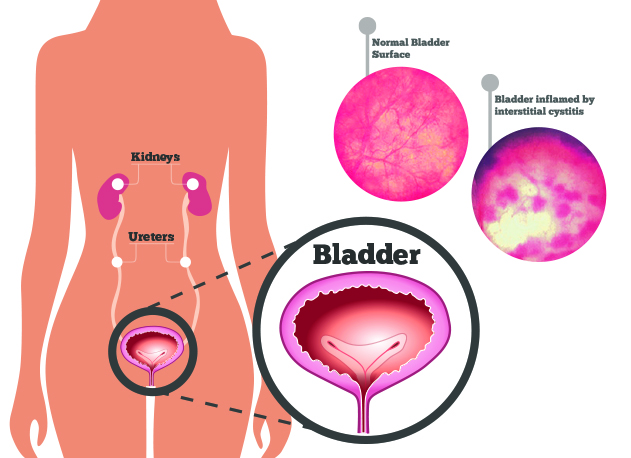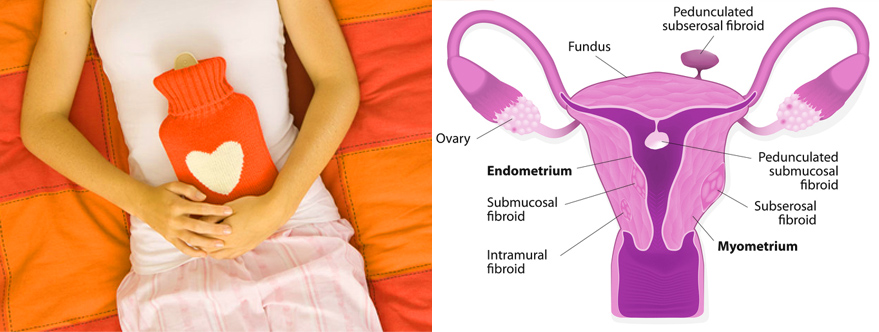FEMALE INFERTILITY IS A TERM THAT REFERS TO INFERTILITY IN FEMALE HUMANS
CAUSES
There are many factors related to Infertility but factors relating only to female infertility are:
1.1 General factors
- Significant liver or kidney disease inherited from parents.
- Thrombophilia (a natural inclination or tendency to develop thrombosis (blood clots) due to an abnormality in the system of
coagulation (blood clotting)
1.2 Hypothalamic-pituitary factors
- Hypothalamic dysfunction (in the brain.)
1.3 Ovarian factors
- Polycystic ovarian syndrome – PCOS ——-(Polycystic ovarian disease PCOD) is an endocrine disorder that affects approximately 10% of all women. It occurs in amongst all races and nationalities, is the most common hormonal disorder among women of reproductive age, and is a leading cause of infertility.The principal symptoms are weight problems, lack of regular ovulation and/or menstruation, and excessive amounts or effects of androgenic (masculinizing) hormones.The symptoms and severity of the syndrome vary greatly between women.While the causes are unknown, insulin resistance, diabetes and obesity are all strongly correlated with PCOS.
- Anovulation is the absence of ovulation when it would be normally expected (in a postmenarchal, premenopausal woman).
- Diminished ovarian reserve – Impaired ovarian reserve (poor ovarian reserve) is a condition of low fertility characterized by low numbers of remaining oocytes in the ovaries. Quality of the eggs (oocytes) may also be impaired.
- Premature menopause – Premature Ovarian Failure (POF), also known as primary ovarian insufficiency, is the loss of function of the ovaries before age 40. A commonly cited triad for the diagnosis is amenorrhea, hypergonadotropinism, and hypoestrogenism.
- Menopause in women cannot be defined simply as the permanent “stopping of the monthly periods”, because in reality what is happening to the uterus is quite secondary to the process. For medical reasons, the uterus is sometimes surgically removed (hysterectomy) in a younger woman, and after this her periods will cease permanently, and the woman will technically be infertile. But, as long as at least one of her ovaries is still functioning, the woman will not have entered menopause.This is because even without the uterus, ovulation and the release of the sequence of reproductive hormones will continue to cycle on until the time of menopause is reached.
- Ovarian cancer
1.4 Tubal (ectopic)/peritoneal factors
- Endometriosis is a common medical condition characterized by growth beyond or outside the uterus of tissue resembling endometrium, the tissue that normally lines the uterus.
- Affecting an estimated 89 million women of reproductive age (those who have yet to become pregnant) around the world, endometriosis occurs in one in every five women. However, endometriosis can occur
very rarely in postmenopausal women. An estimated 2% – 4% of endometriosis cases are diagnosed in the postmenopausal period. - In endometriosis, the endometrium (from endo, “inside”, and metra, “womb”) is found to be growing outside the uterus, most commonly in the pelvis.
- Pelvic adhesions – Pelvic adhesions cause many problems for millions of women. From obstructed tubes associated with infertility, to pelvic tenderness, and painful intercourse, to chronic pelvic pain. Curiously, adhesions can be very extensive, yet relatively silent.They may remain silent indefinitely or long after the causative event, become symptomatic.The causes of adhesions are multiple but basically the tissue irritation that produces the adhesive process arises from an inflammatory event, or from trauma (i.e. post surgical).
- Pelvic inflammatory disease (PID, usually due to chlamydia) is a common sexually transmitted infection (STI) caused by the bacterium Chlamydia trachomatis.
- Tubal occlusion is a voluntary surgical procedure for permanently terminating a woman’s fertility.Tubal occlusion can be done by minilaparatomy or laparoscopy. It blocks the fallopian tubes (tying and cutting, rings, clips or electrocautery) and sperm are prevented from reaching the ova and causing fertilization.
- Tubal dysfunctions fallopian tube obstruction or epithelial dysfunction that impairs zygote motility; pelvic lesions are structural abnormalities that can impede fertilization or implantation.
1.5 Uterine factors
- Uterine malformations is the result of an abnormal development of the Mullerian duct(s) during embryogenesis. Symptoms range from amenorrhea, infertility, recurrent pregnancy loss, and pain, to normal functioning depending on the nature of the defect.
- Uterine fibroids (leiomyoma) are noncancerous growths of the uterus that often appear during your childbearing years. Also called fibromyomas, leiomyomas or myomas, uterine fibroids aren’t associated with an increased risk of uterine cancer and almost never develop into cancer.
- Asherman’s Syndrome is the formation of intrauterine adhesions, which typically result from scars that develop after uterine surgery.
1.6 Cervical factors
- Cervical stenosis is a condition in which the spinal canal is too small for the spinal cord and nerve roots. This can cause damage to the spinal cord, a condition called myelopathy, or pinch nerves as they exit the spinal canal (radiculopathy). Occasionally, damage to the spinal cord and nerve roots may occur, resulting in a condition called myeloradiculopathy.
- Antisperm antibodies – In some instances, a woman’s
cervical mucus can also develop antibodies to her partner’s sperm. It is believed that antisperm antibodies in the cervical mucus may account for as much as 40% of unexplained infertility in couples. - Non-receptive cervical mucus can make it hard for the sperm to penetrate. In such cases intrauterine insemination (IUI) is recommended. Sperms In this procedure after special preparation (washing and concentration) is injected directly in the uterine cavity through a thin catheter.
1.7 Vaginal factors
- Vaginismus is a condition which affects a woman’s ability to engage in any form of vaginal penetration, including sexual penetration, insertion of tampons, and the penetration involved in gyneacological examinations.This is the result of a conditioned reflex of the pubococcygeus muscle, which is sometimes referred to as the ‘PC muscle’.The reflex causes the muscles in the vagina to tense suddenly, which makes any kind of vaginal penetration including sexual penetration – either painful or impossible.
- A vaginismic woman does not consciously control the spasm.The vaginismic reflex can be compared to the response of the eye shutting when an object comes towards it.The severity of vaginismus and the pain during penetration, including sexual penetration, varies from woman to woman.
- Vaginal obstruction – Uterovaginal obstruction includes disorders of vaginal development such as a transverse vaginal septum or complete vaginal agenesis, which may be associated with other developmental anomalies (eg, Rokitansky-Küster-Maier-Hauser syndrome). Duplication anomalies of the uterovaginal tract often involve 1 tract that is decompressed and 1 that is obstructed. In these patients, abdominal and back pain occurs despite their having a cyclic menstrual period. One must always consider other non-congenital conditions, such as malignancies of the upper or lower genital tract, in the differential diagnosis.
1.8 Genetic factors
- Various intersexed conditions such as androgen insensitivity syndrome
- Androgen insensitivity syndrome (AIS) – also referred to as androgen resistance syndrome – is a set of disorders of sexual differentiation caused by mutations of the gene encoding the androgen receptor.The nature of the resulting problem varies according to the structure and sensitivity of the abnormal receptor. Most forms of AIS involve variable degrees of undervirilization and/or infertility in XY persons of either gender. A person with complete androgen insensitivity syndrome (CAIS) has a female external appearance despite a 46XY karyotype and undescended testes, a condition termed “testicular feminization” in the past.




